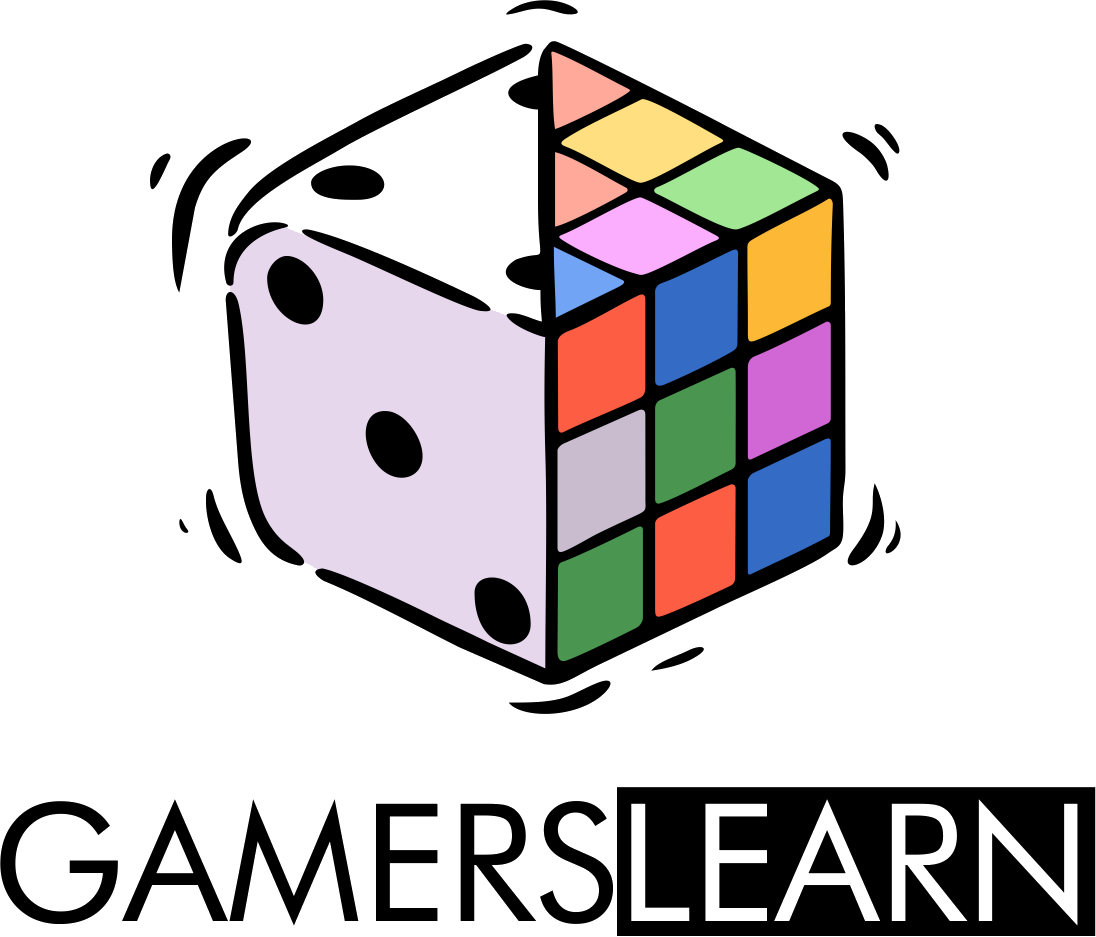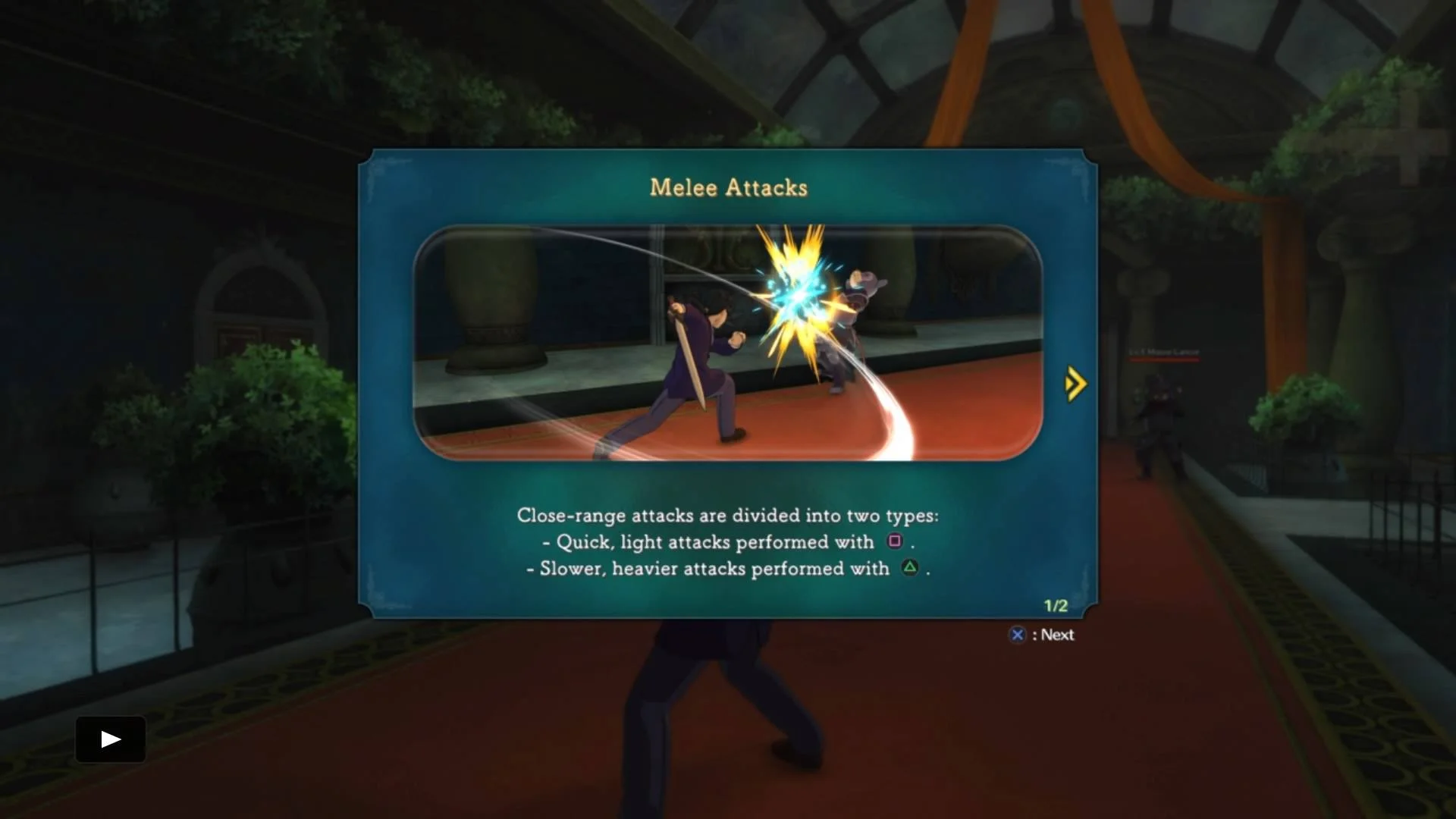Situated Learning in Video Games
Because video games give players the tools they need to solve a problem the moment the problem arises, the meaning or purpose of the learning is almost always immediately recognizable. Players don’t ask “Why are we learning this?” It is crystal clear.
The concept of situated learning (Anderson, Reder, & Simon, 1996) within education is that learning takes place within the same or authentic context in which it will be applied or useful. This principle is common in almost every video game you will play today. In video games, what is taught to the player or what the player needs to know to progress, is often situated within the same context in which it will be needed and useful.
For example, there is usually some sort of immediate or imminent challenge where the player must utilize what they were just taught in order to progress. Below is an example from Bandai Namco's (2018) RPG Ni No Kuni II: Revenant Kingdom. In the beginning of the game, the player is ambushed by guards. The player is then given a weapon, and the game introduces (read: teaches) the basics of combat (melee attacks and jumping) which the player will use for the remainder of the game.
Situated Learning in Ni No Kuni II
There is usually some sort of immediate or imminent challenge where the player must utilize what they were just taught in order to progress.
This can be quite different from what learning looks like in school, where learning (at least in math class) often takes place outside of the context in which the knowledge can be applied or useful. Further, learning in school can often be disassociated with one’s career objectives or goals. Vavilis & Vavilis (2004) spoke to and recorded conversations with students in their high school math classrooms. Several students expressed frustration and questioned why they were learning the mathematics they were being taught, and questioned its usefulness outside of their class.
Situated learning addresses this problem. Because video games give players the tools they need to solve a problem the moment the problem arises, the meaning or purpose of the learning is almost always immediately recognizable. Players don’t ask “why are we learning this?” It is crystal clear.
Situated learning in Mario + Rabbids Kingdom Battle
Above is another example of situated learning in Mario + Rabbids Kingdom Battle (Ubisoft, Ubisoft Milan, Ubisoft Paris, 2017). In the above clip is the player’s first encounter with “Smasher” type monsters. The game teaches the player how to best approach these monsters (which they will continue to encounter through the remainder of the game) based on their behavioral patterns.
It is important to note that what is taught to the player in a video game is constantly being applied and used throughout by the player throughout the entire game. That is, the player is always being tested to recall their knowledge of the game mechanics, skills, and whatever else they were taught throughout the entire game. If you think about it in this way, you can consider video games as a chain of formative (levels) and summative assessments (boss battles).
Educational Math Games
Situated Learning - Slice Fractions 2
I’ve noticed that in educational math games like Slice Fractions 2 (Ululab, 2014), there is a subtle approach to when players are introduced to certain mechanics. Although the approach is less direct than a commercial video game, the mechanic is still taught in a context authentic to the situation. In the video above, the player is first introduced to the slice mechanic (partitioning). You’ll notice that this mechanics is introduced when the player needs to slice a lava block in half to cool off the ice blocks and pave the way for the mastodon.
Do you think there are ways in which we can improve education so that learning is more situated, relevant, and perhaps more meaningful to our students? I would love to hear your comments below!
References
Anderson, J. R., Reder, L. M., & Simon, H. A. (1996). Situated Learning and Education. Educational Researcher, 25(4), 5–11.
Vavilis, B., & Vavilis, S. L. (2004). Why are we learning this? What is this stuff good for, anyway? The importance of conversation in the classroom. Phi Delta Kappan, 86(4), 282-287.




